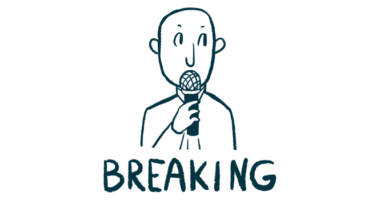What Do You Know? Exploring the Questions We Should Ask
I wanted to expand on my last column by delving into the types of questions we should ask when presented with a new ailment, such as muscular dystrophy.
I’d like to start with an anonymous quote: “It ain’t what people don’t know that hurts them, it’s what they know that ain’t so.” This begs the question, how do we know what we think we know?
As a college professor and lifelong learner, I teach my students that there are seven ways of knowing: intuition, tradition, superstition, common sense, authority, rationality, and experience. And if sharing knowledge is caring, we can remember the seven ways of knowing by using the acronym “IT’S CARE.”
I could go on for hours about each of these topics, and I have in the past, but I will let each of you go down that rabbit hole on your own, as it truly is more fun that way. That said, it appears that knowing, or rather the sense of knowing, can come from internal and external factor — from having a feeling, to someone telling you what to believe.
Believing — now this is a different term. Believing and knowing are not the same, and both are equally important. Knowledge is generally considered concrete in that it is grounded in evidence and facts that can be proven. On the other hand, belief stipulates a sense of unknowing with possible uncertainty. I want to make that distinction because a physician frequently says something based on facts, but that is still medical belief and not knowledge.
I will reiterate some examples from previous columns. First, when my medical reports came back with abnormal values (factual knowledge), the physicians assumed my condition was psychosomatic (opinion/belief) until further evidence from a muscle biopsy (factual knowledge) changed their mind. Similarly, when I was diagnosed, a physician stated that based on the evidence of the rate of deterioration of my muscle, I had a year at most to walk. Again, that was a belief and not a fact, because I overcame that time limit.
This brings me to my next point: What is the best treatment, and how do we find it? One of my favorite actors, Michael J. Fox, is known to have said, “If you ask a person what their favorite therapy is, they will tell you it is the one that works.” As a healthcare provider (I’m a physical therapist) and educator, I can say that there is no simple answer. Instead, treatment should be structured around what is referred to as evidence-based practice.
Evidence-based practice is structured around three pillars: clinician experience, scientific research, and most importantly, the patient and their values. This means that treatment involving two or more pillars would likely have positive effects, while treatment integrating all three would lead to optimal patient outcomes. This means that as a patient, we must “believe” a treatment will work to eventually “know” it is working.
There are two points I want to make here. First, regarding the evidence and research, one of my favorite lines from a research book is something along the lines of, “There is no such thing as research, there is only search, more search, and keep on searching.”
While this is not necessarily the ideal answer, it allows room for hope. I truly believe that until the book of my life is over, I’ll look forward to seeing what is on the next page. Perhaps there is a major twist coming up, but I won’t know until I’ve lived to experience it.
The second point is about knowledge. Knowledge is power, and so is lack of knowledge. Sometimes knowing too much is a bad thing, while other times, not knowing is detrimental. Again, the balance of knowledge and belief will play an integral part in how your body reacts.
For example, I didn’t believe my neurologist when they said I had a year left to walk. I genuinely believe that no one comes into this world with a “best by” or “expiration” date. My belief is that I know I can modify the future if I truly want to. The future is what we make it. As my wife puts it, “Strive for fulfillment, not perfection.”
To believe implies knowing, but knowing does not imply belief.
So, this brings us to the main point: What should we ask? Well, there are two types of questions. Firstly, there are foundational questions that provide information or background about a topic. Secondly, there are questions about how something affects you. Both types of questions are vital, literally and figuratively.
In my next column, I will expand on specific questions and how I have approached them. Stay tuned.
***
Note: Muscular Dystrophy News is strictly a news and information website about the disease. It does not provide medical advice, diagnosis or treatment. This content is not intended to be a substitute for professional medical advice, diagnosis, or treatment. Always seek the advice of your physician or another qualified health provider with any questions you may have regarding a medical condition. Never disregard professional medical advice or delay in seeking it because of something you have read on this website. The opinions expressed in this column are not those of Muscular Dystrophy News or its parent company, Bionews, and are intended to spark discussion about issues pertaining to muscular dystrophy.








Leave a comment
Fill in the required fields to post. Your email address will not be published.